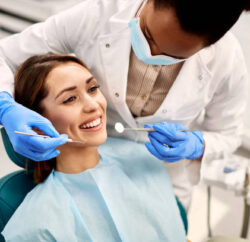Scoliosis is a condition that affects the spine, causing it to curve abnormally. It can occur in people of all ages, but it is most commonly diagnosed in children and adolescents. The condition can cause a range of symptoms, from mild discomfort to severe pain and deformity. In this article, we will explore the causes of scoliosis, the different types of scoliosis, signs and symptoms, diagnosis, and the available scoliosis treatment options in Singapore (https://physioactive.sg/our-services/physiotherapy/scoliosis-management/).
What is scoliosis?
Scoliosis is a condition in which the spine curves to the side, creating an S or C-shaped curve. This abnormal curvature can cause the shoulders, hips, and waist to become uneven, leading to an asymmetrical appearance and as a result, some people with scoliosis may also experience back pain, muscle fatigue, and difficulty breathing.
The condition affects both boys and girls, but girls are more likely to require treatment. In most cases, the cause of scoliosis is unknown, and it is referred to as idiopathic scoliosis. However, there are other identifiable causes of scoliosis, such as congenital scoliosis, neuromuscular scoliosis, and degenerative scoliosis, which we will discuss in the following sections.
Understanding the causes of scoliosis
The exact cause of idiopathic scoliosis is unknown, but some researchers believe that genetics may play a role. Studies have shown that scoliosis tends to run in families, and certain genes may make a person more susceptible to developing the condition. However, not all cases of scoliosis are hereditary, and other factors may contribute to the development of the condition.
- Congenital scoliosis is caused by a spinal abnormality that is present at birth. This type of scoliosis is rare and can be caused by a number of factors, such as abnormal development of the spine or spinal cord, or by a defect in the vertebrae.
- Neuromuscular scoliosis is caused by a problem with the nerves or muscles that control the spine. This type of scoliosis can be caused by conditions such as cerebral palsy, muscular dystrophy, or spinal muscular atrophy.
- Degenerative scoliosis is caused by the natural wear and tear of the spine that occurs with age. As the discs between the vertebrae wear down, the spine can become unstable, leading to a curvature.
Types of scoliosis
There are several different types of scoliosis, each with its own characteristics and causes. Idiopathic scoliosis is the most common type, but there are other types that are less common. Some of the different types of scoliosis include:
- Idiopathic scoliosis: This is the most common type of scoliosis, and the cause is unknown.
- Congenital scoliosis: This type of scoliosis is present at birth and is caused by a spinal abnormality.
- Neuromuscular scoliosis: This type of scoliosis is caused by a problem with the nerves or muscles that control the spine.
- Degenerative scoliosis: This type of scoliosis is caused by the natural wear and tear of the spine that occurs with age.
Signs and symptoms of scoliosis
The signs and symptoms of scoliosis can vary depending on how severe the curve appears to be and the age of the person. In some cases, scoliosis may not exhibit any symptoms, and the condition may be discovered during a routine physical exam. Some of the common signs and symptoms of scoliosis include uneven shoulders or hips, a visible curve in the spine, uneven ribcage, back pain or muscle fatigue, and in more serious cases, breathing difficulties.
Diagnosing scoliosis
Scoliosis is typically diagnosed through a physical exam and diagnostic imaging tests, such as X-rays, CT scans, or MRIs. During the physical exam, the doctor will look for signs of scoliosis, such as uneven shoulders, hips, or waist. They may also ask the person to bend forward to see if there is a visible curve in the spine.
If scoliosis is suspected, the doctor may order diagnostic imaging tests to confirm the diagnosis and determine the severity of the curve. These tests can also help identify the type of scoliosis and rule out other underlying conditions.
Treatment options for scoliosis in Singapore
The treatment for scoliosis will depend on the severity of the curve and the age of the person. In some cases, scoliosis may not require treatment, and the doctor may recommend monitoring the condition with regular check-ups. However, if the curve is severe or is causing symptoms, treatment may be necessary.
Non-surgical treatment options for scoliosis include:
- Bracing: A brace can be worn to help prevent the curve from getting worse, particularly in children and adolescents who are still growing.
- Physical therapy: Physical therapy can help improve posture, strengthen the muscles, and reduce pain associated with scoliosis.
- Pain management: Pain medication or injections may be prescribed to help manage pain associated with scoliosis.
Surgical treatment for scoliosis may be necessary in cases where the curve is severe or is causing symptoms. The goal of surgery is to straighten the spine and prevent the curve from getting worse. Some of the surgical treatment options for scoliosis include:
- Spinal fusion: This is the most common type of surgery for scoliosis. During this procedure, the surgeon will fuse together two or more vertebrae to create a solid, straight piece of bone.
- Growing rod surgery: This type of surgery is typically done in young children. The surgeon will attach a rod to the spine to help straighten the curve as the child grows.
- Vertebral body tethering: This is a newer, less invasive surgical procedure that involves attaching a cord to the spine to straighten the curve.
Coping with scoliosis
Living with scoliosis can be challenging, both physically and emotionally. However, there are things that can be done to help manage the condition and improve quality of life. Some tips for coping with scoliosis include:
- Maintaining good posture: Good posture can help reduce pain and discomfort associated with scoliosis.
- Staying active: Regular exercise can help strengthen the muscles and improve flexibility.
- Seeking support: Joining a support group or talking with others who have scoliosis can be helpful in coping with the condition.
Scoliosis treatment in Singapore
Singapore has several hospitals and clinics that specialize in the treatment of scoliosis. These facilities offer a range of treatment options, from non-surgical options such as bracing and physical therapy to surgical options like spinal fusion and growing rod surgery. Patients in Singapore can expect to receive high-quality care from experienced doctors and healthcare professionals. With proper treatment and management, people with scoliosis can lead a healthy, active life.
Physioactive
Orchard Clinic
Camden Medical Centre #06-01 Singapore 248649
Phone: 6235 2647
CBD Clinic
160 Robinson Road, #05-03 SBF Center Singapore 068914
Phone: 6438 0162
East Coast Clinic
46 East Coast Road Eastgate #08-03 Singapore 428766
Phone: 6443 4591
Jurong Clinic
2 Venture Drive Vision Exchange #02-13/14 Singapore 608526
Phone: 6258 5602
Novena Clinic
8 Sinaran Drive Novena Specialist Center #07-12 Singapore 307470
Phone: 6734 4707











